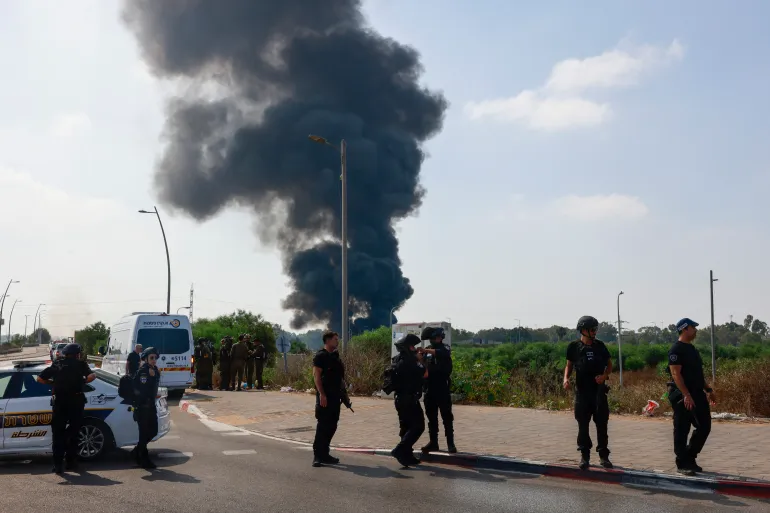Israel has carried out strikes across Iran while Tehran has returned fire as the foes trade attacks for a sixth straight day and the region anxiously braces for a potentially wider and ruinous conflict, Al Jazeera reported.
Early on Wednesday, the Israeli military said new waves of missiles had been launched from Iran. Israeli media outlets reported that the latest salvos triggered sirens across the entire country, including the Tel Aviv area where explosions and fires were reported.
Explosions were also reported in the early hours in Tehran and Karaj, a city west of the capital.
The continued aerial exchanges come as United States President Donald Trump ramped up his rhetoric and pressure on Iran. In one post on his Truth Social platform, he said, “We now have complete and total control of the skies over Iran,” without clarifying who the “we” was. Israel made the claim about controlling Iranian skies in recent days, without providing evidence, Al Jazeera said.
Iran still has air defence systems operating. Its army said on Tuesday that it had tracked and intercepted 28 “hostile aircraft” in 24 hours. It said one of them was a spy drone trying to gain intelligence on “sensitive” sites.
Trump also made a thinly veiled threat directed at Iranian Supreme Leader Ayatollah Ali Khamenei, saying the US knows where he is hiding but does not want him killed “for now”. In another post, he wrote, “UNCONDITIONAL SURRENDER”.
Concerns that the US could spark a wider regional war should it enter direct conflict with Iran continued to build throughout the day as Trump met with his national security team.
Khamenei, in his first statement since Trump’s threat, wrote on X: “In the name of the noble Haidar, the battle begins.” Haidar is an alternative name for Imam Ali, the fourth Muslim caliph and a revered figure in Shia Islam.
Earlier, Trump had struck an ominous note, calling for the immediate evacuation of Tehran. Hours later, in comments to reporters on Air Force One after his early departure from the Group of Seven (G7) summit in Canada, he said he was looking for a “real end” and not just a ceasefire in the conflict.
The Israeli military reported on Tuesday that it carried out “several extensive strikes” on what it said were missile sites and other military targets in western Iran, striking dozens of missile and drone facilities. Footage verified by Al Jazeera showed large plumes of smoke rising from several areas in Iran’s Isfahan province.
Throughout the day and into the evening, the official Iranian news agency IRNA reported that “continuous and intense” explosions were being heard in densely populated neighbourhoods of Tehran.
Iranian media also reported that loud explosions were heard in the northwestern city of Tabriz, home to an air force base that Israel has repeatedly targeted since it launched a surprise assault on Iran’s military and nuclear facilities on Friday.
Three people were killed and four injured in strikes on the central city of Kashan, Iran’s state-run Nour News Agency reported.
A residential building was struck in Tehran and three people were rescued from the rubble, the reports added.
IRNA said that eight missiles were launched at Israel in Iran’s latest salvo. Israel’s military confirmed that Iran had fired more missiles, saying that “most” had been intercepted, without providing details.
Explosions were heard over Tel Aviv and Jerusalem among other areas. Images showed plumes of dark smoke rising from the site of a strike in Herzliya as emergency services were deployed at the scene.
Israel’s national emergency service said that 10 people were injured while running to shelters after air raid sirens sounded in Tel Aviv.
Al Jazeera’s Nour Odeh, reporting from Amman, Jordan, because Al Jazeera is banned from Israel, said that the Israeli military censor has forbidden the publication of images and information about Herzliya, classifying it as “sensitive”.
"That usually means that it’s either a military, intelligence or strategic asset or site that the Israeli military censor does not want to disclose,” Odeh said.
Lessons from Trump’s win






































